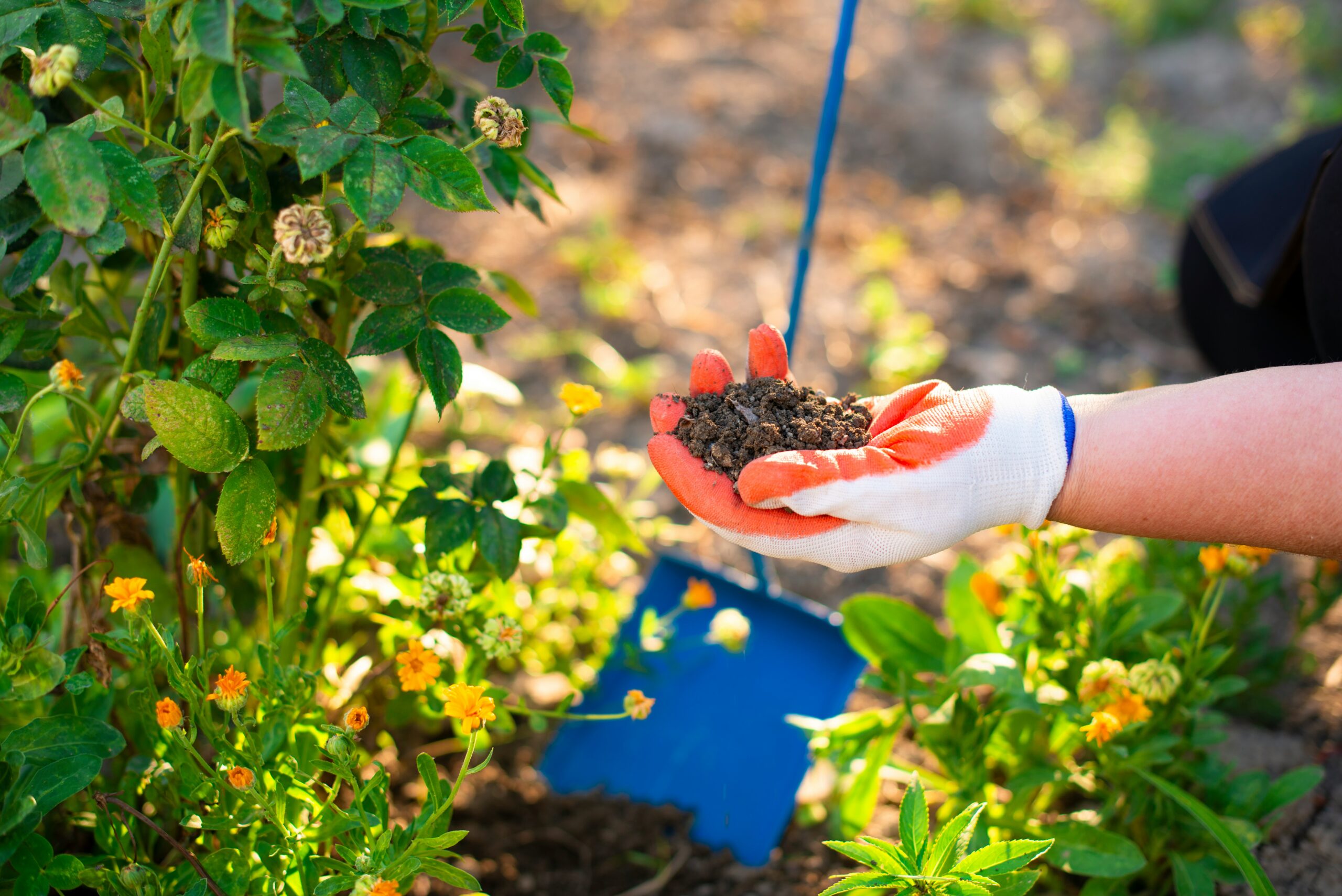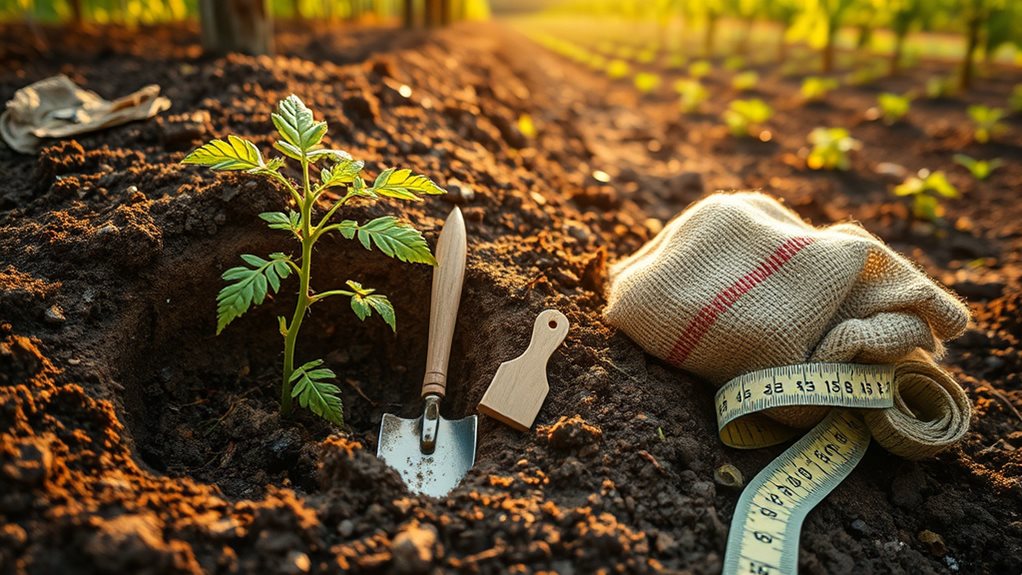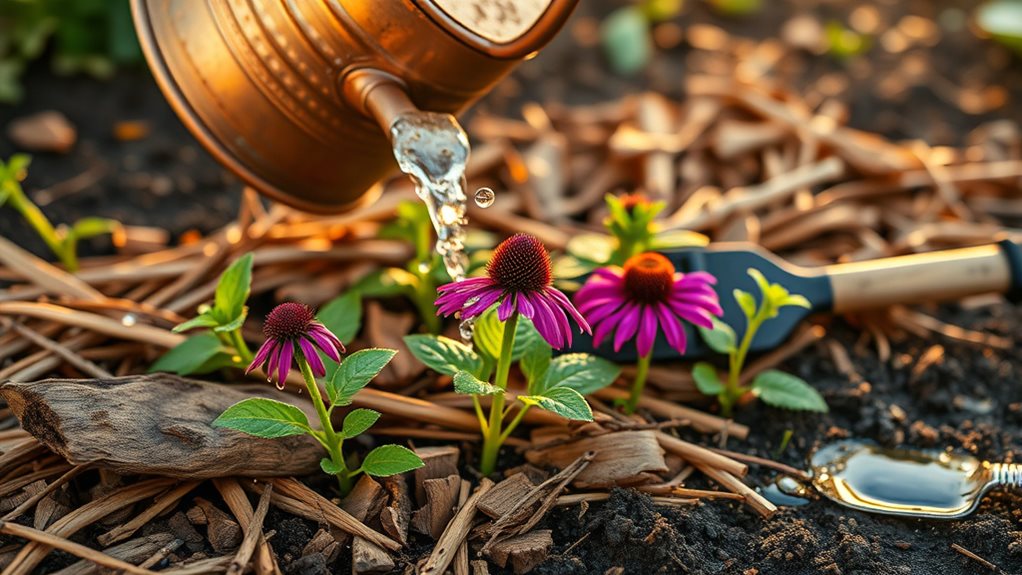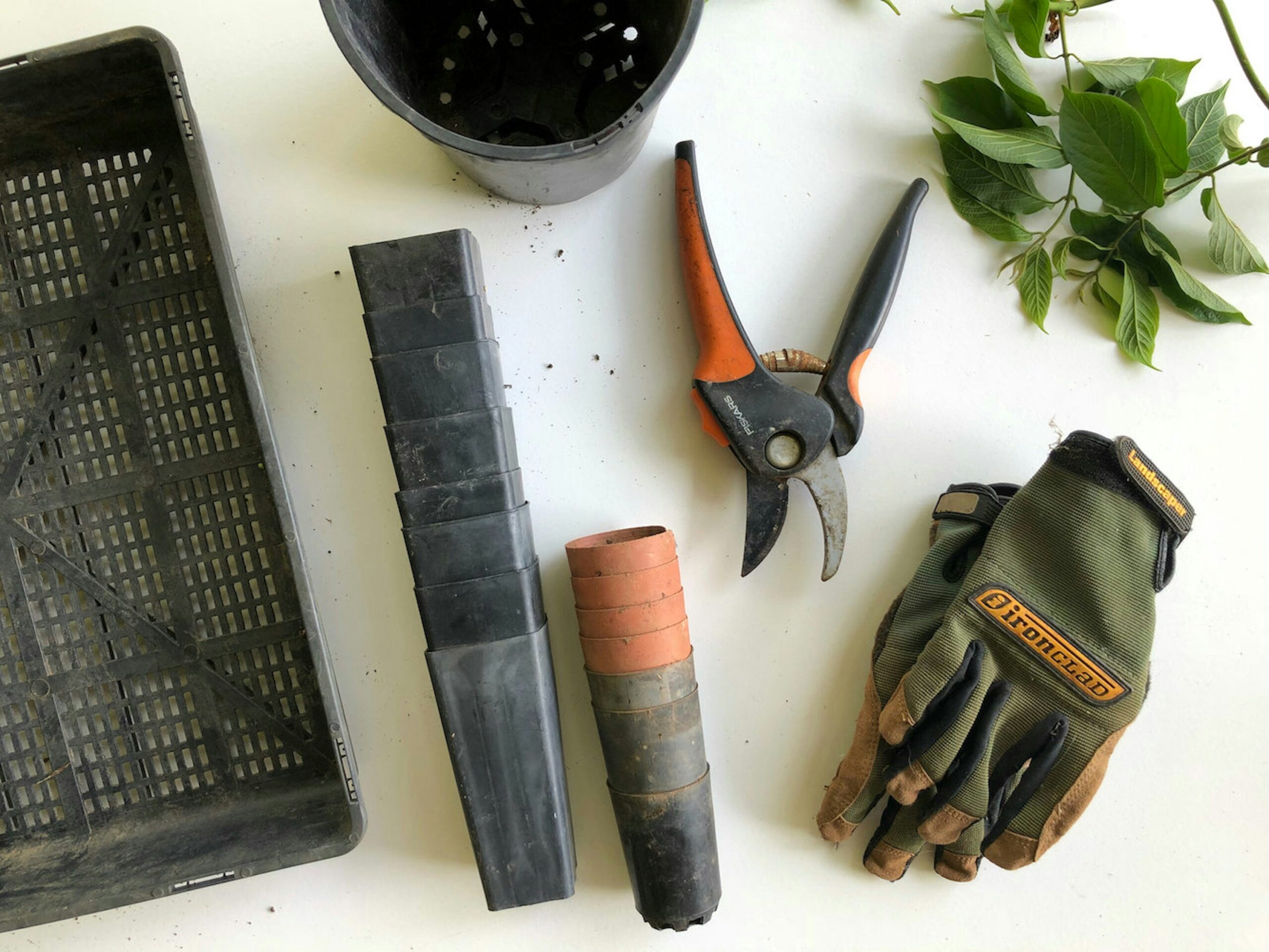Where to dig in?
Success in gardening starts with proper soil preparation, removing existing vegetation and adding organic matter. Choose plants that match your sunlight conditions and hardiness zone, then space them according to package instructions. Water thoroughly, saturating the root ball to wet soil about one foot deep. Apply appropriate mulch thickness (1-3 inches) based on plant type, keeping it away from stems. Gather essential tools like a trowel, spade, and pruning shears to make your planting tasks easier. The following steps will transform your garden from ordinary to extraordinary.
Preparing Your Soil for Optimal Growth

Before you plant your first seed or seedling, preparing your garden soil lays the foundation for a successful growing season. Start by removing existing vegetation with a shovel or sod cutter to prevent unwanted regrowth in your garden beds.
Thorough soil preparation creates the foundation for garden success before any planting begins.
Key Soil Preparation Steps:
- Loosen compacted soil with a garden fork, especially for raised beds
- Test your soil’s pH level (aim for 6.0-7.2 for most vegetables)
- Add organic matter like compost or manure to improve structure
- Apply limestone or fertilizers as recommended by soil test results
Clay soils need organic material to improve drainage, while sandy soils benefit from added organic matter to retain moisture. Loamy soil provides the ideal balance of drainage and moisture retention for most garden plants. Aim to loosen the soil to at least 8 inches deep for proper root development. Mulch your prepared soil to suppress weeds and maintain moisture levels. For best results, begin soil preparation a year before planting.
Selecting the Right Plants for Your Garden Space

With your soil properly prepared, selecting the right plants for your garden marks the next step toward gardening success.
Start by honestly evaluating your site’s conditions:
- Sun exposure: Choose plants that match your garden’s daily sunlight (full sun, partial shade, or full shade)
- Soil compatibility: Consider your soil’s texture and pH before selecting plants
- Water availability: Pick plants with water needs that match your rainfall and irrigation options
- Climate suitability: Select plants adapted to your hardiness zone and local weather patterns
Consider using graph paper layouts to visualize how your plants will interact with each other and your garden space before planting.
Remember to consider the mature height of your chosen plants to avoid overcrowding issues in the future, especially near structures.
Basic Planting Techniques and Spacing

Once you’ve selected the perfect plants for your garden, mastering proper planting techniques and spacing becomes critical for their long-term health and productivity. Proper spacing guarantees adequate airflow, reduces disease risk, and allows each plant to access sufficient nutrients and sunlight.
Follow these key planting principles for success:
- Check plant tags for specific spacing requirements—cucumbers need 8-10 inches when ground-grown but only 2-3 inches when trellised.
- Plant at appropriate depths, placing tomatoes deeper than their original pots to encourage additional root growth.
- Consider sunlight orientation when arranging plants, ensuring each variety receives its ideal light exposure.
- Prepare soil thoroughly by loosening it to the proper depth and adding organic matter to improve fertility and drainage.
For foundation plantings, maintain at least 2.5 ft space around each shrub’s expected full size to prevent overcrowding and future maintenance issues.
Beginners can experiment with container gardening using grape tomatoes, lettuce, herbs, and mini bell peppers for a simple introduction to cultivation techniques.
Watering and Mulching for New Plantings

Proper watering and mulching form the foundation of successful plant establishment, giving your new garden residents the best possible start in their new home. After planting, immediately saturate the root ball with enough water to wet soil about one foot deep.
The first weeks in your garden are critical—proper hydration and protection set the stage for thriving plants.
Watering Guidelines
- Adjust water volume by plant size—small shrubs need less than a gallon while large trees require up to ten gallons
- Test soil drainage by checking if water percolates within 24 hours
- Modify your watering schedule based on weather conditions and soil type
For the first few weeks, water frequently—every other day if needed—especially during dry or hot periods to ensure proper root development. Using a kink-free hose can make this essential maintenance task much easier and ensure consistent water flow to your new plantings.
Effective Mulching
- Apply organic mulch 3 inches deep for trees, 2 inches for shrubs, and 1 inch for bedding plants
- Keep mulch away from plant bases to prevent water accumulation and root rot
- Replenish mulch once or twice yearly to maintain its moisture-retaining benefits
Essential Tools for Successful Planting

Successful planting begins with having the right tools at your disposal, saving you time, energy, and frustration throughout your gardening journey. The right equipment makes all the difference between struggling and enjoying the process of bringing your garden to life.
The four must-have tool categories for planting success:
- Hand tools – A quality hand trowel for transplanting, pruning shears for trimming, and protective gloves to keep your hands safe from thorns and soil
- Digging tools – A sturdy spade or shovel for preparing planting holes and a garden fork for breaking up compacted soil
- Planting aids – Dibbers for creating precise seed holes and plant labels to track what you’ve planted
- Support tools – A comfortable kneeler to protect your knees and a wheelbarrow for transporting soil and plants
When selecting a spade, look for one with a hardened steel blade that will withstand frequent use in tough soil conditions without bending or breaking.
For specialized gardening tasks, consider adding a hori hori knife to your collection as it excels at weeding, cutting, and digging in tight spaces.
Frequently Asked Questions
How Do I Attract Beneficial Insects to My Garden?
Plant flowers that provide nectar and pollen throughout growing seasons. Choose a variety of shapes and colors like:
- Umbelliferous plants (fennel, dill, parsley) for lacewings and hoverflies
- Fragrant bloomers like lavender and marjoram for pollinators
- Native wildflowers for local beneficial insects
You’ll need to avoid pesticides completely, as they kill helpful insects too. Create undisturbed areas with diverse vegetation for shelter, and be patient while your beneficial insect population establishes itself.
When Should I Start Seeds Indoors Versus Direct Sowing?
Start seeds indoors when you’re growing plants that:
- Need a long growing season
- Require warm soil for germination
- Are slow to sprout
Direct sow when your plants:
- Have sensitive roots that don’t transplant well
- Grow quickly to maturity
- Prefer cooler soil conditions
You’ll want to start heat-loving vegetables like tomatoes and peppers indoors 6-8 weeks before your last frost date, while quick-growing plants like radishes should be direct sown.
How Can I Prevent Transplant Shock in Young Plants?
To prevent transplant shock in young plants:
- Water thoroughly before transplanting to keep roots moist
- Handle roots gently, keeping as much soil around them as possible
- Transplant on cloudy days or evenings to reduce stress
- Water immediately after planting, adding a diluted seaweed solution
- Provide shade for a few days if it’s sunny
- Maintain consistent moisture until plants establish themselves
You’ll notice less wilting and stronger growth when you follow these steps carefully.
What Companion Plants Help Deter Common Garden Pests?
You can use several companion plants to deter common garden pests naturally. Plant herbs like basil and thyme to repel flies and mosquitoes.
Marigolds are excellent for keeping nematodes away from your vegetables, while also attracting helpful ladybugs. Try garlic and onions to keep aphids from attacking your plants.
For extensive protection, mix flowers like nasturtiums and lavender throughout your garden beds to both repel pests and attract beneficial insects.
How Do I Extend My Growing Season in Colder Climates?
You can vastly extend your growing season with these effective strategies:
- Use protective covers like row covers and frost blankets to shield plants from cold temperatures
- Install season extension structures such as cold frames or hoop houses
- Select cold-hardy varieties with shorter maturity dates
- Implement techniques like warming the soil with black plastic and providing wind protection
- Consider container gardening, which allows you to move plants to sheltered areas when needed
Conclusion
You’re now equipped with the essential knowledge to start your planting journey! Remember, successful gardening combines proper soil preparation, appropriate plant selection, and consistent care. Take time to understand your garden’s unique conditions, invest in quality tools, and don’t be afraid to experiment. With patience and these fundamental techniques, you’ll create a thriving garden that rewards your efforts for seasons to come.

